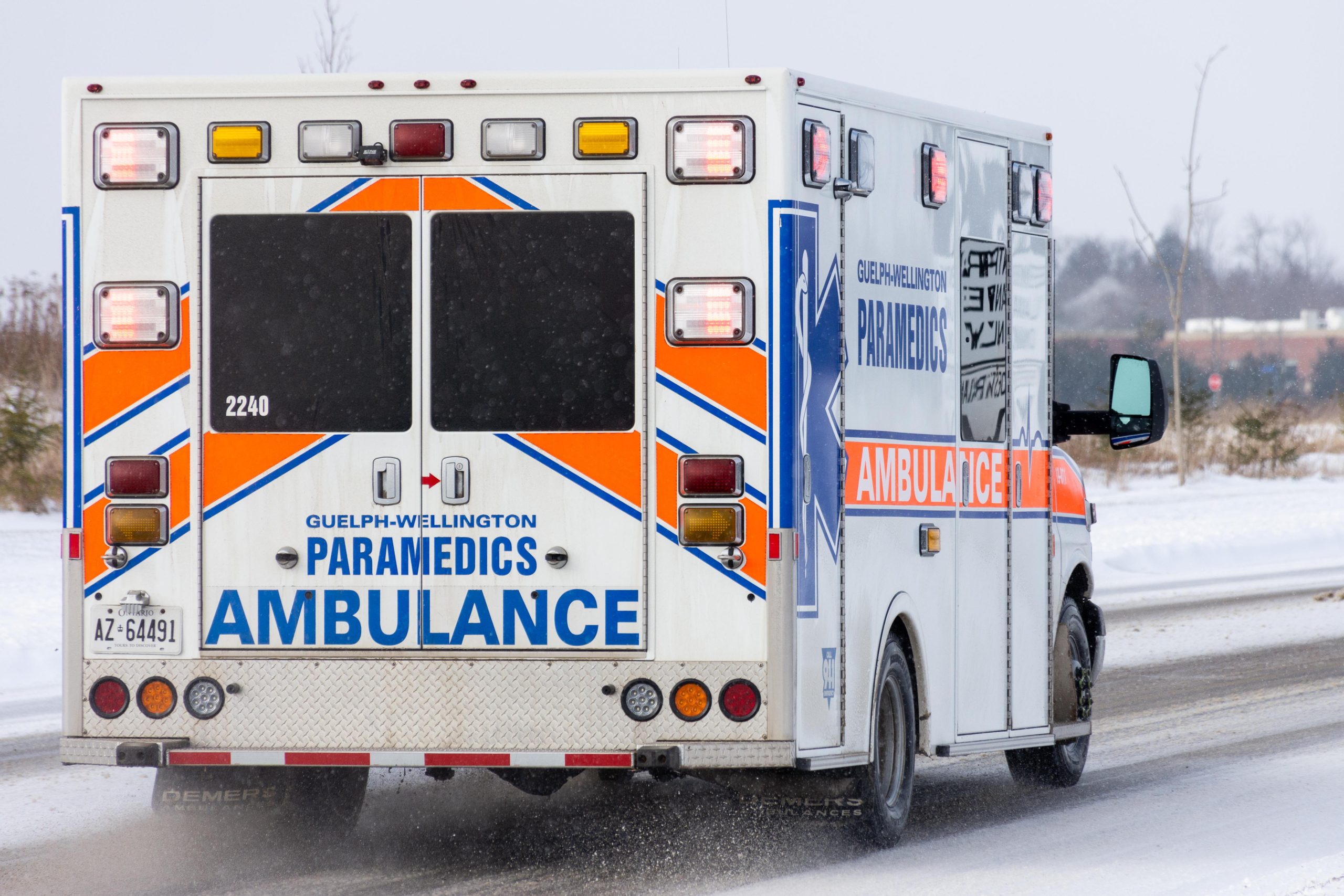WELLINGTON COUNTY – Guelph-Wellington Paramedic Service (GWPS) paramedics may soon have the option to assess people with COVID symptoms at home without needing to take a person to an emergency department.
The option to defer transportation comes in a medical directive from the Hamilton Health Sciences’ Centre for Paramedic Education and Research (CEPR) – the hospital group responsible for overseeing local paramedics – but will need to be approved for use by Guelph’s Emergency Operations Control Group before paramedics, including those in Wellington County, can embrace it.
GWPS chief Stephen Dewar confirmed to the Advertiser in a Jan. 7 phone call that the service’s 170 paramedics have started training for the directive, but said word hasn’t yet been received on whether the directive will be used locally.
The service already offers a COVID+ remote monitoring program for those who are recovering from the virus at home, but the new option could help to prevent emergency departments from being overwhelmed when paramedics transport people to hospital who could safely remain at home.
“Paramedics encountering a patient with less severe COVID symptoms … would consult with a physician and potentially advise the patient not to go to the hospital and leave them with some directions and some instructions about what to do if they get worse,” Dewar explained.
“That’s a significant change for paramedics, because we don’t usually advise people not to go to the hospital.”
CEPR medical director Dr. Paul Miller said the directive isn’t new – it was approved by the provincial government early on in the pandemic – but it took the Omicron variant to bring it out.
“It’s not until this wave with Omicron that what we’re seeing is really high volumes of lower acuity patients; people with less serious COVID than in the previous waves,” Miller said.
The directive’s intent is to ensure “patients are cared for in the right place,” the doctor said, adding those who meet certain criteria can be managed safely at home.
Regardless of a person’s condition, paramedics are still responding to a call for service, Dewar said, and a patient would need to consent to remain at home.
“The paramedics are ultimately responsible for making the assessment that identifies that the person is a candidate and then describing their physical assessment findings to the physician,” Dewar explained.

The ambulance entrance at Groves Memorial Community Hospital. Photo by Jordan Snobelen
Doctors are on call 24/7 to immediately receive calls from paramedics who are actively providing care and, according to Miller, an additional telephone number is now available for paramedics in anticipation of increased calls thanks to the directive.
“The call will include things like the patient’s symptoms, their past medical history, of course their age is an important piece here, a set of vital signs, and the preferences of the patient to either be transported to hospital or not,” Miller explained.
Chief Dewar admitted there is “risk involved” in advising people to stay home; people could get worse and feel they shouldn’t call 911 again.
“It’s not about saying to patients ‘we’re not taking you to the hospital,’ it’s about giving them advice assisted by a physician,” Dewar said.
Paramedics are required to provide patients with information on how to manage their symptoms along with information on additional resources, including advice to call 911 if symptoms worsen.
All local paramedics are anticipated to complete online training within the next two weeks.
“We’ll complete the training and be prepared in case this wave of COVID becomes even more severe and the hospital [system] is overwhelmed,” Dewar said.
The directive is already being used by emergency medical services in Hamilton and Niagara.




